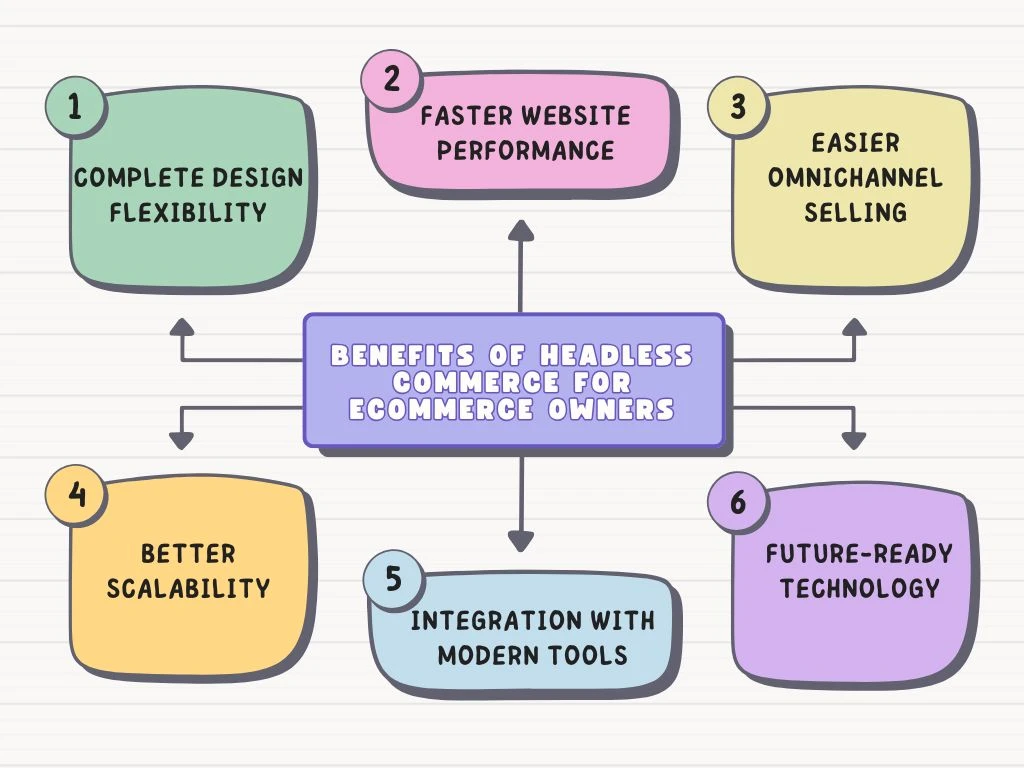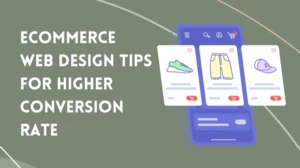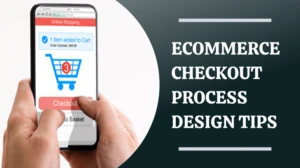Everything Ecommerce Owners Should Know About Headless Commerce
If we see the early days of ecommerce, most of us, the shoppers, used to browse and buy products through desktop websites.
But today, the way we shop has changed dramatically. Today’s customers tend to move between devices — from smartphones and tablets to voice assistants and social platforms, in order to buy any product. They expect speed, personalisation, and a consistent experience everywhere.
In such a scenario, traditional full-stack systems struggle to deliver this level of flexibility, but headless commerce brings the modern setup to fulfil all the needs of the modern customers.
In this article, we will cover all the essentials you need to know about headless commerce.
What is headless commerce?
If we explain simply, headless commerce is a modern way to build an online store. In this setting, the front end (known as what customers see on a website or app) is separated from the back end (where all the products, orders, and payments are managed).
Unlike traditional ecommerce, where both front-end and backend are tied together in one system, in a headless setup, both are connected through APIs — special tools that let the two parts talk to each other.
Except for the major difference that the front and back ends are separated, headless commerce is different from traditional ecommerce in many ways, as it offers
- More design freedom
- Faster website performance
- Easier multi-channel selling
- Quicker updates and changes
- Greater flexibility and scalability
- Easier integration with new tools
How does headless ecommerce work?
Headless commerce eventually separates the front end of your online store from the back end.
Both layers operate independently.
The front end, known as the presentation layer, handles the visuals of your store — like product pages, layouts, and navigation. It is often built with modern frameworks such as React, Next.js, or Vue.js.
The back end, which is known as the commerce engine, actually manages core functions like product inventory, checkout, payments, and customer data.
The key connector between these two layers is the API (Application Programming Interface). These act as the messenger in this process. They transmit information between the front and back ends.
As an example, if a customer clicks the “Add to Cart” button, the front end immediately sends that request through an API to the back end. At that exact time, it updates the cart data and sends the new information back with no delay.
6 Benefits of headless commerce for ecommerce owners
For ecommerce owners, headless commerce offers more than just technical flexibility. It allows you to deliver unique customer experiences, scale faster, and stay ahead of competitors.
Here are some of the benefits:

1. Complete design flexibility
As a website owner, your design capability will no longer be limited by pre-built templates or platform restrictions. When you use headless commerce, you can design custom storefronts using any front-end framework. This helps your brand to stand out with a look and feel that’s entirely your own.
2. Faster website performance
Since the front end and back end operate separately, you can optimise each for speed. Faster load times boost both user experience and SEO rankings. And all these lead to higher engagement and sales.
3. Easier omnichannel selling
Headless architecture uses the same backend data through APIs and delivers consistent content across multiple channels, such as websites, mobile apps, social media, smart devices, or even in-store screens.
4. Better scalability
As your business grows, headless settings allow owners to easily integrate new tools, features, or channels without rebuilding the entire ecommerce system. This flexibility encourages the owners for future expansion and innovation.
5. Integration with modern tools
You can simply use APIs to connect marketing automation tools, CRMs, inventory systems, and analytics platforms. This will lead to smoother workflows and more efficient operations.
6. Future-ready technology
From AI personalisation tools to AR shopping and voice commerce, the API-driven structure of headless commerce makes it smooth to adapt to new technologies.
How will headless commerce impact your customers?
Headless commerce doesn’t just benefit businesses; it significantly boosts the shopping experience for customers, too.
1. Faster website performance
As the front end can be optimised separately, it ends up loading the web pages more quickly. This leads to shorter waiting times and frustration. A fast website keeps shoppers engaged and improves conversion rates.
2. More consistency across devices
Whether customers are shopping through a website, mobile app, or social media, headless commerce ensures a unified experience as it offers the same content and product information to appear seamlessly across every channel.
3. Maintain personalised interactions
As APIs connect multiple tools and data sources, businesses can offer product recommendations, promotions, and content based on the user’s preferences and behaviour.
4. Smoother checkout process
Headless architecture ensures flexible checkout experiences as well. Businesses can offer one-click checkout or integration with various payment gateways. It eventually leads to fewer cart abandonments.
5. More innovation and interactivity
Brands can experiment with modern features like AR product previews, chatbots, or voice-enabled shopping. It will boost interactivity without disrupting the core ecommerce system.
Some of the challenges you should consider
Even if headless commerce comes with many advantages, there are a few challenges that ecommerce owners should consider before they make a switch.
- Building a headless commerce system will require a higher upfront investment compared to traditional platforms. You’ll also need developers to assist you in setting up APIs, integrating tools, and designing custom front ends, all of which can increase initial costs.
- Sometimes, it turns challenging to connect multiple systems like CMS, CRM and payment gateways without proper planning, as both front-end and backend operate separately.
- Sometimes, custom development and integration can also take time. So, if your business is looking for quick store launches, you might find the headless approach a bit slower at the beginning.
- Since there are multiple systems involved, for every update or new feature, you may have to do compatibility checks to ensure everything functions smoothly.
When should you consider going headless?
Headless commerce is ideal for those ecommerce stores that have already reached the limits of traditional platforms.
Here’s when you should consider going headless,
- If you want a custom design and have a plan to provide a unique shopping experience that templates can’t offer.
- If you are selling through multiple channels like websites, apps, or social media, and you want to maintain consistent content across all.
- If your site needs faster performance and more flexibility for updates.
- If you are into content marketing and need better control through a headless CMS.
- If you plan to expand internationally and need easier localisation for different markets.
- If you want to use technologies like AI, AR/VR, or advanced analytics to future-proof your store.
Popular platforms you can consider for headless commerce
- Shopify Plus
- WebCommander
- BigCommerce
- Adobe Commerce (Magento)
- Commerce Layer
- Sanity
- Gatsby
Now, before we end, let’s see what the numbers say about the growth of headless commerce.
- The headless commerce market is expected to reach $11.8 billion by 2028, with a growing compound annual growth rate (CAGR) of 17.5%.
- 70% of ecommerce businesses have already considered or already implemented headless commerce to improve flexibility and performance.
- Companies that use headless commerce see an average increase of 20% in conversion rates.
- In 2024, the market was valued at around US $1.8 billion and expected to grow to about US $4.5 billion by 2033 (CAGR ~10.5%).
Final words
Headless commerce is eventually a forward-thinking approach that will assist an ecommerce owner to build flexible, scalable, and customer-focused online stores.
While it may need a higher upfront investment and technical setup, considering the long-term benefits in performance, innovation, and customer satisfaction, it is hands down a smart move for any growing business who are ready to stand out in a competitive digital landscape.




![How to Start an Ecommerce Business in Australia [2023 Guide]](/template/5731a701/images/resource-blog-right-img1.png)





